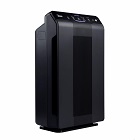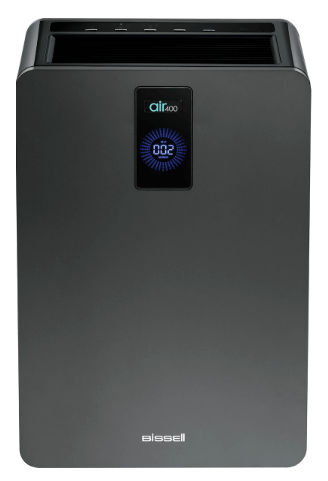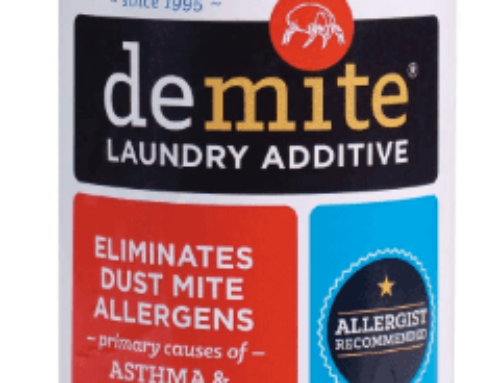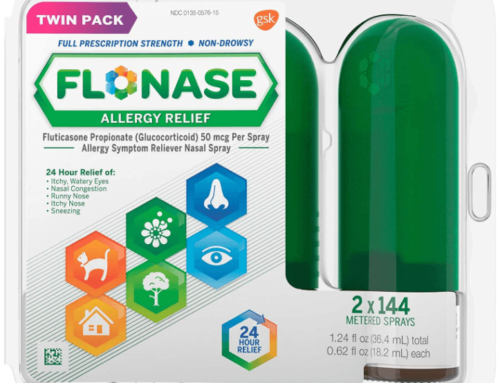Table of Contents
Allergic medications are only as good as the environment that you’re living in. If you’re suffering from dust mites allergy, you’ll want to reduce the growth and population of dust mites at home. Getting an air purifier is one of the many methods that help.
In fact, the air purifier is the first appliance that I’ve bought when my son was diagnosed with dust mites allergy. I’ll be lying if I claim it is the ultimate solution to dust mites problems. But it does help to improve air quality and reduce allergies.
Dust Mites Removal Air Purifiers Compared
| Product | Coverage | Filter | Size | Warranty | Price |
| Bissell air400 | 423 sq ft | 3-stage with HEPA | 9.65" x 16.14" x 24.37" | 2 years | |
| Dyson Pure Cool Link | 300 sq ft | 3-Stage with HEPA | 7.7" x 7.5" x 40" | 2 years | |
| Aeramax 300 | 600 sq ft | HEPA + Carbon | 8.1" x 16" x 25.1" | 3 years | |
| GermGuardian AC5350 | 234 sq ft | 3-Stage with HEPA | 6.69" x 9.06" x 27.65" | 3 years | |
| Winix 5550-2 | 360 sq ft | 3 Stage with HEPA | 15" x 8.2" x 23.6" | 1 year |
How To Choose The Best Air Purifier For Dust Mites Removal
An air purifier isn’t the cheapest appliance for your home and you’ll want to make the right decision. Thankfully, choosing an air purifier isn’t rocket science, and here are the important factors you need to consider before making a decision.
- Technology – HEPA air purifier is the most effective way and safe in removing dust mites from the air. You’ll want to avoid using an ozone purifier due to the safety concern. Negative ions don’t really remove the dust mites, but merely scattering them on the floor. Activated carbon purifiers are great for chemical-based pollutants. Modern air purifiers may integrate the best of HEPA, carbon filter, and UV to remove dust mites and other allergens from the air.
- Coverage – Air purifiers have specific coverage areas. If you need an air purifier for the living room, ensure that the product is stated with the adequate coverage capacity. To be sure, measure the size of your room before getting one.
- Maintenance – HEPA air purifier requires very little maintenance. The HEPA filter will require replacement but often after 6 months or more. Some air purifiers have a filter replacement indicator. Make sure you change the filter when it lights up.
- Features – Features like timers, variable fan speed, and caster wheels may be handy. Every model may have a different set of features that you may or may not need.
- Size – Air purifiers, especially those for larger rooms, can be rather bulky. You’ll want to know how much space an air purifier will take up in your room.
- Warranty – Air purifiers are a relatively simple electrical appliance, but take no risk by checking out the warranty offered for each model.
Best Air Purifiers For Dust Mites 2020
1. Bissell air400 (Best All-Rounded Quality)
Features
- Size:9.65″ x 16.14″ x 24.37″
- Filtration Technology: HEPA, activated carbon, pre-filter.
- Coverage: 423 sq. ft.
The Bissell air400 is one of the best air purifiers to remove dust mites and other allergens in your home. It is designed with a 3 stage filtration system where the air would pass through a pre-filter, HEPA, and an activated carbon filter. It removes particles as small as 0.3 micrometers and that includes dust mites.
The combination of these filters removes 99.97% of dust, pollen, pet dander, dust mites, airborne particles, and other allergens in the air. Besides, the activated carbon also cleanses the air from any foul odor. As the air purifier is completely ozone-free, you do not need to worry about the hazardous effect of ozone pollution.
You can operate the air purifier in one of the 3 speed settings, i.e. high, medium, or low. When the air quality drops severely, turning the fan to high helps to increase the airflow and purifying rate. It is also notable that the air purifier operates quietly without exceeding 65 dB of sound level.
This is an air purifier that not only reduces the dust mites in your home but also sports a unique design that makes it a visually pleasing item in the living room or bedroom. It has an effective coverage area of 423 square feet, making it ideal for a large and medium room.
Bissell offers a 2 years warranty for this air purifier, an indication that the manufacturer is confident of its durability. Besides that, the air purifier requires relatively low maintenance as the manufacturer suggested replacing the filter at a 6 months interval, or more, depending on usage.
Pros
- Features a triple filtration stage system.
- Low noise operation
- Suitable for large rooms.
Cons
- Some customers received defective units.
2. Dyson Pure Cool Link Tower Air Purifier (Most Portable)
Features
- Size: 7.7″ x 7.5″ x 40″
- Filtration Technology: 360 degrees glass HEPA filter.
- Coverage: 300 sq. ft.
Dyson’s innovation shines in its Pure Cool Link Tower Air Purifier. It’s the perfect solution for taking care of dust mites allergen in a room that measures up to 300 sq. f.t. The air purifier is built with a remote control function that allows you to set the unit with an app.
Unlike other air purifiers, the Dyson air purifier has a rather unique filtration system. It has a 360-degree HEPA filter that removes allergen from all directions. This saves you the hassle of figuring out proper positioning for the unit. With Dyson’s tower air purifier, any position works equally well.
This towering air purifier is a beast on its own but a rather quiet one. It’s accredited with the Quiet Mark by the Noise Abatement Society, which ensures that it operates quietly such that it would never disrupt your sleep. Rather, the frequency generated by the unit can help you sleep better.
Besides cleaning the air, the Dyson air purifier is a beauty to behold. Its unique design is something unseen in the industry. The air purifier makes great decor for any modern homes. It’s known to consume minimum energy as it’s expected not to exceed the 56 W rating.
The Dyson Pure Cool Link Tower Purifier is not the cheapest air purifier around. Expect to pay a substantial amount for the quality and aesthetic design of the unit. But it’s also important to note that the air purifier is covered by 2 years of warranty.
Pros
- High coverage area.
- Effective HEPA filtration for removing dust mites.
- Quiet operation.
Cons
- Expensive
3. AeraMax 300 Large Room Air Purifier (DX95) – Best For Large Rooms
Features
- Size: 8.1″ x 16″ x 25.1″
- Filtration Technology: HEPA, carbon, AreaSafe antimicrobial, PlasmaTRUE technology
- Coverage: 300 – 600 sq ft.
The AeraMax 300 is an air purifier that would have no problem in cleaning the air in a large living room. It is specified to remove allergen and contaminants in an area of up to 600 square feet. It is constructed with a four-stage filtration system to ensure clean air is released to the room.
The filtration stage involves HEPA, carbon filter, AreaSafe antimicrobial treatment, and PlasmaTRUE technology. HEPA and carbon filter both remove allergen and odor respectively. The AreaSafe antimicrobial treatment prevents bacteria and allergen from growing on the HEPA filter.
Any remaining airborne pollutants are then removed by the ionized field created by the PlasmaTRUE technology. The AeraMax 300 is certified by the Asthma and Allergy Foundation of America to be asthma and allergy-friendly.
You could increase or decrease the fan speed manually or allow the intelligent AeraSmart sensor to detect the indoor air quality and alter the speed accordingly. If you’re having seasonal allergy during the flu seasons, you can turn on the special high-performance mode to quickly remove the allergens and germs of the air.
You’ll be reminded when both the carbon and HEPA filters are due for replacements. There are two indicators on the panel that will lit up if the respective filters need to be replaced. While the HEPA filter is expected to last at least 12 months, the carbon filter has a relatively short lifespan of 3 months.
Arguably the best air purifier to have in the living room.
Pros
- 4-stage filtration for maximum air purification.
- Great for large rooms.
- Smart sensing to automatically adjust the fan speed.
Cons
- Some units produce a loud noise.
4. GermGuardian AC5350 4-in-1 Air Purifier by Guardian Technologies
Features
- Size: 6.69″ x 9.06″ x 27.65″
- Filtration Technology: HEPA, activated carbon, pre-filter, UV-C, germ treatment
- Coverage: 234 sq ft.
This GermGuardian AC5350 is an impressive air purifier manufactured by Guardian Technologies. It’s one of the best air purifiers for allergies. Besides the 5-stage-filtration system of pre-filter, activated charcoal, HEPA, germ treatment, and carbon filter, the air purifier is also equipped with UV-C light.
Dust mites, dust, and other pollutants in the air will be trapped by filter out from the air. The UV-C light, which is also known as ultraviolet germicidal irradiation, kills of trapped germs and bacterias. Any leftover harmful particles are further decomposed by the titanium dioxide.
The air purifier works splendidly for a maximum coverage area of 234 square feet but has been tested to be effective in even larger rooms. The AC5350 operates at 5 different speeds. It is designed for low-noise operation. At low speed, you’ll barely realize that it’s even running.
You’ll want a highly efficient air purifier that cleanses the air in a short period of time. The AC5350 circulates the air four times in an hour when it’s placed in a medium or large-sized room. If you’ve been fending off allergies for months, this is the best air purifier to help keep the indoor air clean.
The manufacturer recommends that the filter is replaced every 6 – 8 months. An LED indicator is also assigned to alert users that it’s time to either replace the filter or the UV-C light bulb. The air purifier is covered by a 3 years warranty against manufacturing defect.
Pros
- 3-stage filtration system.
- UV-C light with titanium dioxide to kill off germs and reduce volatile organic compounds.
- Quiet operation.
Cons
- Some units are faulty.
5. Winix 5500-2 Air Purifier with True HEPA Filter

Features
- Size: 15″ x 8.2″ x 23.6″
- Filtration Technology: HEPA , activated carbon, PlasmaWave
- Coverage: 360 sq ft.
If you need a decent air purifier to remove dust mites in the living room or a large bedroom, the Winix 5500-2 is up to the task. It is rated to cover an area of 360 sq ft. The air that passes through the air purifier undergoes 3 stages of filtration.
The first stage of filtering involves the coated deodorization carbon filter that removes unpleasant odors and neutralizes volatile organic compounds (VOC) from the air. The air would then passes through the HEPA filter, which traps tiny allergens and airborne particles like dust mites and pet dander. The final stage is a unique filter driven by PlasmaWave Technology, that breaks down odors, allergens, and other pollutants safely.
You can alter the speed of the fan from a choice of four different speeds. If the air quality is really bad, choosing Turbo will set the fan to run at maximum speed. The air purifier is also built with an intelligent air sensor that detects the quality of indoor air and alters the fan speed accordingly.
When you place an air purifier in a bedroom, there’s a chance that the glare from the built-in LED may disrupt your sleep. Not so with the Winix 5500-2. It has an auto-dim feature that adjusts the brightness of the LED-based on the ambiance of the room. This particular model also comes with a remote control unit.
The air purifier requires very little maintenance. An LED indicator will light up when it’s time to change the filter. Winix recommends that the carbon pre-filter be replaced every 6 months and the HEPA filter annually. This model has gained a reputation for being one of the best air purifiers for dust and dust mites removal.
Pros
- Triple filtration with HEPA, PlasmaWave, and carbon filter.
- Four different fan speeds.
- Intelligent air sensor.
Cons
- Some units are defective.
What You Need To Know About Dust Mites
Dust mites are not dust. They are microscopic bugs that escaped the human eyes. A single dust mite measures about 0.3 millimeters. Unless you are using a microscope, dust mites are pretty invisible.
Dust mites feed on dead skin cells, and they grow rapidly in a warm and humid environment. If you spot molds and mildews growing in the bathroom, chances are, your home is an ideal spot for dust mites. In fact, the question is not about whether dust mites exist in your home, but if the numbers are sufficient to cause allergies.
There are a few spots that are the common breeding spots for dust mites with the mattress being the favorite. When you spend 8 hours sleeping on the bed and shedding of skin cells, you’re practically giving the dust mites to an unlimited supply of food.
Other usual suspects locations for dust mites are cushions, rugs, mattresses, curtains, furniture, and dark corners of your home littered with dust.
Most of us would have thought that dust mites are the culprit of the allergic but it is their excretion that is triggering the symptoms in our body. Dust mites produce fecal pellets that contain a type of protein that causes allergy.
To stop the allergies, not only you’ll have to get rid of the dust mites, but also their excretion as well. And this is where air purifiers help.
What Is HEPA Filter
HEPA filter seems to be the buzzword in today’s appliances, including air purifiers. HEPA stands for High-Efficiency Particulate Air and is a standard defined on the air efficiency.
A HEPA filter is made with fiber sheets that are designed to block 99.97% of particles as small as 0.3 microns. This means the filter can block allergens like danders, pet hairs, dust mites, and other harmful particles of that size.
Today, you’ll find that the word HEPA is used unsparingly as a marketing advantage. For example, some brands use the term True HEPA Filter to differentiate their products.
What’s important is the filter is compliant to the HEPA standards, which means blocking 99.97% of 0.3 microns particles. Avoid ‘HEPA-like’ filters as they are not tested against the HEPA standard.
How Air Purifier Works
Air purifiers, with their sophisticated design and array of glowing lights, can seem pretty complicated. But today’s modern air purifier is based on the concept of the protective masks for firemen. Its ultimate objective is to prevent pollutants from being inhaled into our respiratory system.
The air purifier functions by channeling the airflow through a series of filters to remove allergens, dust, bacterias, smoke, pet dander, and other pollutants. The clean air is then directed back to the room. By leaving the air purifier on, the air quality of the room improves over time.
There are two types of parameters that define the capacity and efficiency of an air purifier. The clean air delivery rate (CADR) indicates the rate that the air purifier filters out polluted air. It is expressed in cubic feet per minute.
The AHAM (Association of Home Appliance Manufacturers) ratings specify the maximum size of the room that the air purifier is designed to operate in. These two ratings will give you a good idea if a particular air purifier is suitable for your room.
Do Air Purifiers Get Rid Of Dust Mites?
You may be wondering if air purifiers are effective in removing dust mites when the creature couldn’t fly in the air. While dust mites couldn’t fly, they are light enough to be sent airborne for a few minutes.
Just the act of lying on your bed may send hundreds of the mites and their excretion into the air. Air purifiers help to remove the pests which have gone airborne and trap them within the filter.
More details in this article.
Common Types Of Air Purifier
There are 5 types of air purifiers that modern technology has produced.
1. HEPA Air Purifier
The HEPA air purifier is arguably the most effective in terms of filtering out pollutants. It is based on the HEPA (High-Efficiency Particulate Air) technology. The air purifier is fitted with a HEPA filter, which is designed to meet the standards set by the DOE.
Any HEPA filter is rated to remove 99.97% of particles of no smaller than 0.3 microns from the air. It is the exact technology that is being used in hospitals to remove contaminants from the air. The filter has a fiber-like construct that removes pollutants through 3 methods; interception, impaction, and diffusion.
Unlike these air purifiers, HEPA filters aren’t washable. In an air purifier, a HEPA filter will last for at least 2 years or more, depending on the frequency of the usage.
2. Activated Carbon Air Purifier
Activated carbon is an extremely porous form of carbon that is highly efficient in absorbing chemical-based pollutants. The carbon is usually available in powder or block form and reacts and removes harmful compounds from the air.
While it is effective to remove odor and other chemical irritants, activated carbon works best when paired with HEPA filters.
3. UV Lights Air Purifier
Ultraviolet lights are known to kill germs and bacterias. UV light air purifiers do so by drawing the contaminants to the filter that is exposed to UV light. One of the drawbacks with UV light is the process of exterminating the contaminants also produce ozone, which can be hazardous in high amounts.
Of course, advanced UV light technology applied by some manufacturers produce a very small amount of ozone.
4. Negative Ion Air Purifier
An ion is a particle that is neutral in charge. A negative ion is one that has acquired an additional electron to make it negative. An air purifier that is driven by this technology releases negatively charged particles into the air. The negative ions will attach itself to the pollutants before dropping off to the floor or sticking on the wall.
The disadvantage of the negative ion air purifier is that the contaminants are not really removed but scattered around in the area. There’s also a risk of a high level of ozone being produced in the some inferior air purifiers.
5. Ozone Air Purifier
Ozone is the name given to the integration of 3 oxygen molecules. It is highly unstable and reactive with any allergen, or contaminant it comes into contact with. While this seems like an effective approach in purifying the air, ozone also reacts destructively with our body.
Exposure to ozone can lead to choric respiratory issues, including breathing difficulty, asthma, and damaging the airways. Ozone air purifiers have been banned by California for home users, due to its negative implications.
Why Get A HEPA Air Purifier For Dust Mites Control?
This is one of the most important questions you should ask before getting an air purifier. The answer lies in the type of air purifier you’re using and the expectation of what it can do. A HEPA air purifier can effectively remove dust mites from the air within its effective coverage.
As mentioned, the air purifier is equipped with a HEPA filtration that will trap 99.97% of allergen including dust mites and its excretion. However, this does not mean that an air purifier can remove dust mites that are deeply entrenched in the mattress.
With that said, having a HEPA air purifier in the bedroom helps to remove dust mites that are sent to the air when you are making the bed. It minimizes the amount of dust mites feces that are inhaled, and thus reducing allergic symptoms.
Studies have also indicated the effectiveness of the HEPA filter in minimizing allergens, such as dust mites.
Hopefully, you’ve found the best air purifier to remove dust mites that are lingering in the air in your home. Make sure you place 1 air purifier near to your bed as there’s where dust mites are usually concentrated.
Related:








Leave A Comment